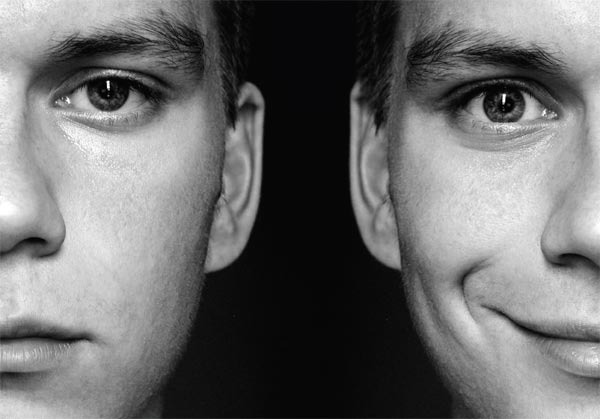
When I begin working with new clients, I often look for indications of whether they are more comfortable with their power or their vulnerability. I listen for areas in their lives where they describe themselves as powerful “givers” or rescuers and areas in their lives where they appear to feel helpless, overwhelmed, and vulnerable. When clients come to me with the goal of reducing their stress levels, I teach them tools that increase the balance in their lives. This balance includes offering each client a clearer understanding of how they relate to and express their power and their vulnerability.
Feelings: Important Messengers
When we are stressed by the demands of life, it is easy to look for ways to distract ourselves from the feelings that are stirring within us. As I share in my book, Stress Reduction Journal, instead of seeing our feelings as allies that have important messages for us, many of us see them as enemies that need to be avoided. That is when we go into a flight mode away from our feelings. For some people, the avoidance of feelings works for a while. However, for most of us, the feelings sooner or later begin to leak out—and it isn’t always pretty. The unconscious leakage of feelings can manifest through our behaviors, our bodily symptoms, and other people’s behaviors.
Our Behaviors
Imagine we are driving through our lives in psychological cars.* Let’s say that we don’t know how to deal directly with our angry feelings, so we hide them in the trunks of our cars. After a while, the intensity of those feelings begins to build. As a result of the pressure, our cars’ trunks pop open uncontrollably on a regular basis and we spew anger. In these times, we may find ourselves forgetting important commitments and arguing with others. We may explode over little things that aren’t at all related to what we’re really angry about. As a result, feelings that are not addressed may unconsciously be expressed through our behaviors.
Our Bodily Symptoms
After years of depositing angry feelings into our trunks, can you imagine how heavy the back ends of our cars would become? Eventually, the front wheels would be lifted up off the ground—we could call this motion an anger wheelie! And, think about how stressful that overloaded trunk’s weight would be on the back tires. If the pressure isn’t released, one or both tires could easily blow out at any time.
Other People’s Behaviors
In What You Feel, You Can Heal, best-selling author John Gray says that what we suppress, others may express. He explains that if we are suppressing strong emotions, then someone else in our household may end up expressing our buried feelings. As a result, our partner, kids, or pets may unconsciously act out our suppressed emotional material.
For example, Pamela came to me seeking tools for weight loss. Shortly into our work it became apparent that Pamela followed the unconscious conditioning from her family and from societal influences—not to express anger. In childhood, she remembered hearing her parents say, “Girls should be seen and not heard.”
From our work together, Pamela discovered that unaddressed hostility and sadness were weighing down the trunk of her psychological car. These painful feelings had been accumulating since she was a little girl. Thus, many people in Pamela’s life were unconsciously working overtime when it came to anger expression (they were expressing some of her suppressed anger in addition to their own anger). High drama in relationships was a common occurrence for Pamela. Fortunately, when Pamela learned healthy ways to deal with her own anger, her weight began to drop and her relationships began to stabilize. She also noticed that she was attracted to new friends who were less angry.
So keep in mind that what we suppress, others may express is reversible. It can become—what others suppress, we may express. The distortion of feelings can happen in either direction. The tools that I offer clients teach them ways to embrace their feelings and learn to see them as allies rather than nuisances or enemies. Consequently, people often become more conscious of their own behaviors, bodily symptoms, and other people’s behaviors. When they embrace the messages that their feelings offer, instead of avoiding them, they have an opportunity to become deeply acquainted with themselves—thereby, gaining the valuable wisdom that their emotions carry.
As a result, they become aware of honoring both their sense of power and sense of vulnerability—to better balance their minds, their bodies, and their emotions. Now that’s a gift of inner peace that nourishes from the inside out…one moment at a time.
*The “psychological car” concept comes from Embracing Our Selves, by Hal and Sidra Stone.
Name and client details changed to protect confidentiality
Trina Swerdlow, BFA, CCHT, is a Certified Clinical Hypnotherapist, an artist, and the author of the 2-CD Set, Weight Loss: Powerful & Easy-to-Use Tools for Releasing Excess Weight. Her artwork and personal profile are included in Outstanding American Illustrators Today 2. She is the author and illustrator of Stress Reduction Journal: Meditate and Journal Your Way to Better Health. Trina has a private practice in downtown Danville. She soulfully shares her creative approach to personal growth and passionately supports her clients in reaching their goals. You can reach her at: (925) 285.5759, or info@TrinaSwerdlow.com.
Certified Clinical Hypnotherapy services in California can be alternative or complementary to licensed healing arts, such as psychotherapy.
Leave a Reply